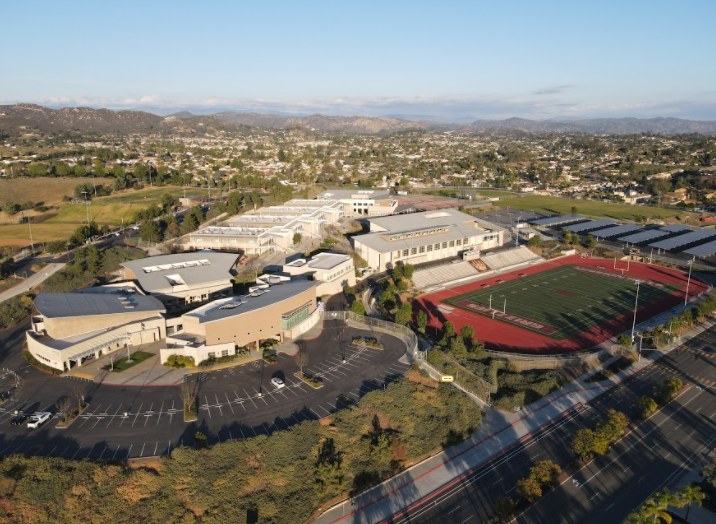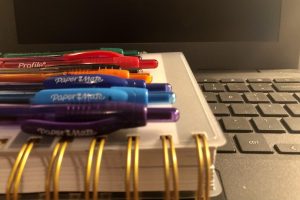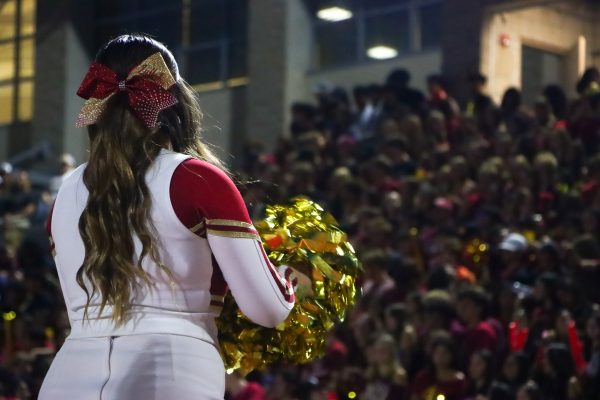The negative affects of distanced learning and why we should go back on campus
Photo by Victor Bautista
After a year at home, students want to go back on campus.
March 7, 2021
As we near the one-year anniversary of our departure from normal school life, many students are anxious to reclaim the normalcy that COVID-19 has taken from them. Students miss their friends, teachers miss their students, and parents miss having time away from their kids; there is a push from many groups for students to return to in-person classes. Due to distance learning’s toll on the mental health of students as well as the strain that it has put on their academic performance, MHHS students should, under optimal conditions of course, return to campus ASAP.
“I think we should return to campus due to the amount of high schoolers suffering because they have no support system… So many kids aren’t showing up to class and suicide/depression rates are on the rise. I truly think that in-person school is so much more beneficial to kids struggling! At MHHS kids can find friends, teachers, counselors, food, resources, et cetera. I really think that it would be more harm than good to keep students from campus any longer,” senior Kellianne Knox said.
The return date for on-campus classes that was set on the 19th of January was cancelled, and with a vaccine now getting circulated and COVID numbers beginning to stagnate, many students and parents are looking forward to returning to a “normal” school environment. For many students, the distanced learning format was detrimental to their academic performance. Students received insufficient instructions from teachers which developed into an apathy for school. The isolation felt by high schoolers, many of whom lack the abundance of socialization they used to have at school and the interactions with their peers, has led to a sharp decline in overall mental health.
“I think we should go back as soon as possible because it’s bad for our students’ mental health, especially in these teenage years. The school tells us to socially engage with other people but with distant learning everyone’s cameras are off and we barely talk. We don’t even get the chance to socialize,” sophomore Savannah Persing said.
While many students are anxious to return to their normal school life, many also believe that it is far too risky to return during the 2020-2021 school year. Most students miss their friends, their teachers, and everything that they lost back in March, but they understand that perhaps it would be best to stay home and finish the school year virtually. To many, there’s no point in risking spikes in COVID cases and further shutdowns when we’re already in the second term and are so close to the end of the year. Had you asked if they should return back in August, you would have gotten a different answer.
Students’ apprehensions towards a return to in-person classes are valid, but the alarming decline in teenagers’ mental health is an important factor to consider. Seniors, who had been crushed by the loss of their senior year, are experiencing a heightened sense of disinterest towards school. Juniors, who are having their hardest academic year, are speeding through lessons without enough instruction or information on the subject. Furthermore, freshmen and sophomores are losing years vital to their overall high school experience. Not to mention that the burnout faced by students is extremely detrimental to their academic performance, with distractions like family members and slow wifi tanking their interest in school. Many students could be left wondering what the point of paying attention even is.
“I also believe distance learning has impacted kids very negatively. Even in myself I’ve noticed a lack of motivation and willpower to even wake up and join class. We have been kept away from normalcy for so long and I think it’s time to get just a little bit back,” Knox continued.
For reasons other than students simply missing normal life, it is imperative that MHHS returns to campus as soon as possible. But with numbers still high and San Marcos’ position in the Purple Tier unwavering, many students are apprehensive to return to campus. There is the fear of numbers rising and cases spreading, resulting in further lockdowns and a push back of sports and school activities. Nonetheless, the need for stability and social interaction with peers along with the subpar performance of distanced lessons is as impactful as ever. Hopes are high that if we drop down into the Red Tier, our plans for a return to in-person classes will begin.








Kate • Mar 25, 2021 at 12:38 pm
I like the hybrid option because it gives students a mix of both the comfort of home and the focused environment of in person learning.